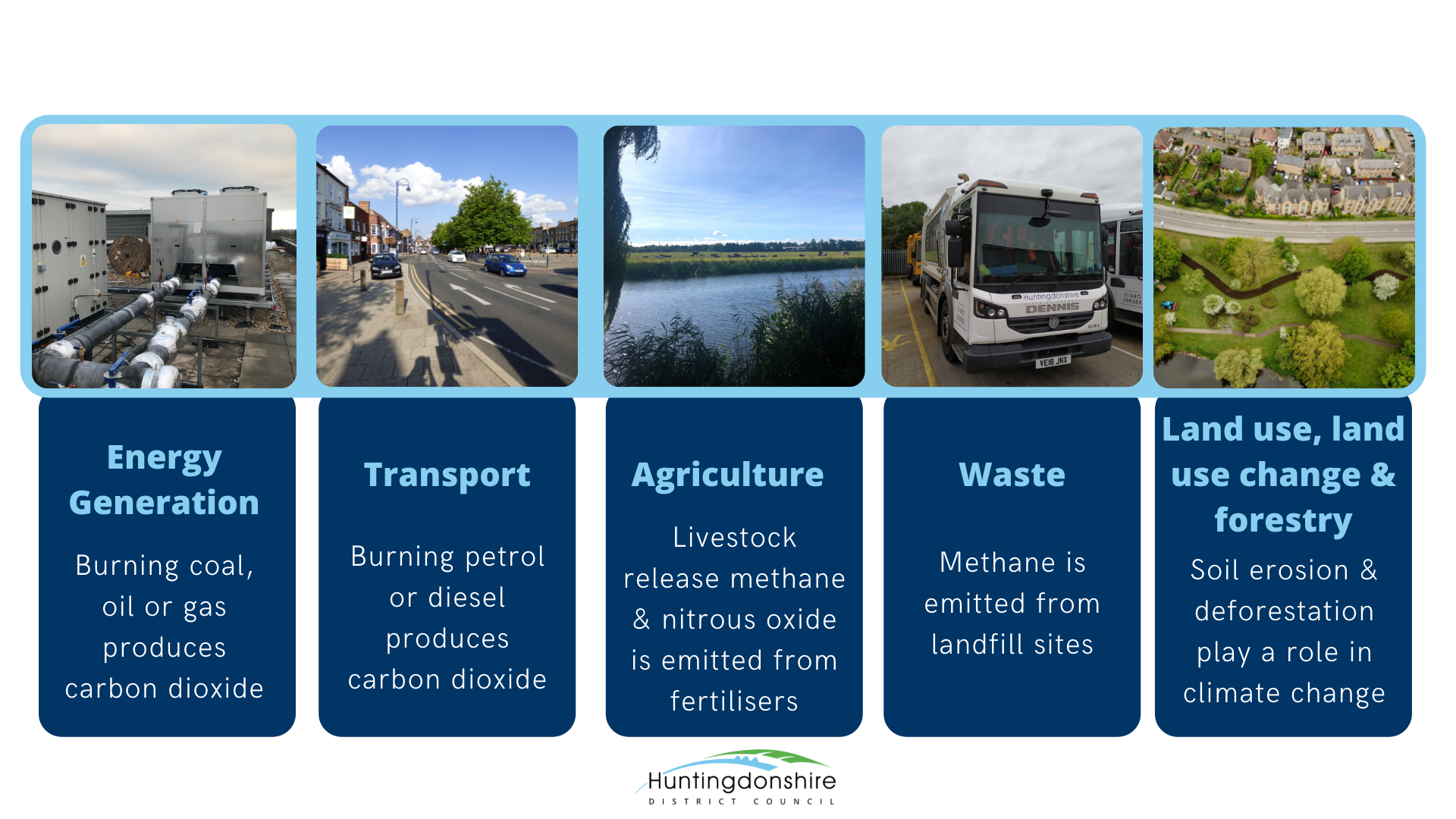Whilst the council is focused on reducing its carbon footprint of all its activities, we need to ask all residents and businesses within Huntingdonshire to contribute toward achieving a net carbon zero Huntingdonshire by 2040.
Carbon footprints
Carbon footprints are a way of accounting for the total greenhouse gases (GHG) caused directly and indirectly by a person, organisation, event or product.
The most common GHG is carbon dioxide (CO2), which makes up 81% of UK GHG.
Other GHG, such as methane (CH4) or nitrous oxide (N2O), are measured in ‘carbon dioxide equivalent’ (CO2e), which takes into account the diverse effects different gases have on the environment.
A wide range of activities produce GHG. For carbon foot printing purposes these tend to be broken down into 5 sectors:

The challenge is complex with things we can do now, and some things which will be easier to do in the future. The Department for Business, Energy and Industrial Strategy records information on C02 emissions.
Based on this information, the chart below highlights the dominance of emissions from road transport reflecting the nature of our district followed by emissions associated with farming land use. But domestic household emissions matter as well - we can all do our bit.





